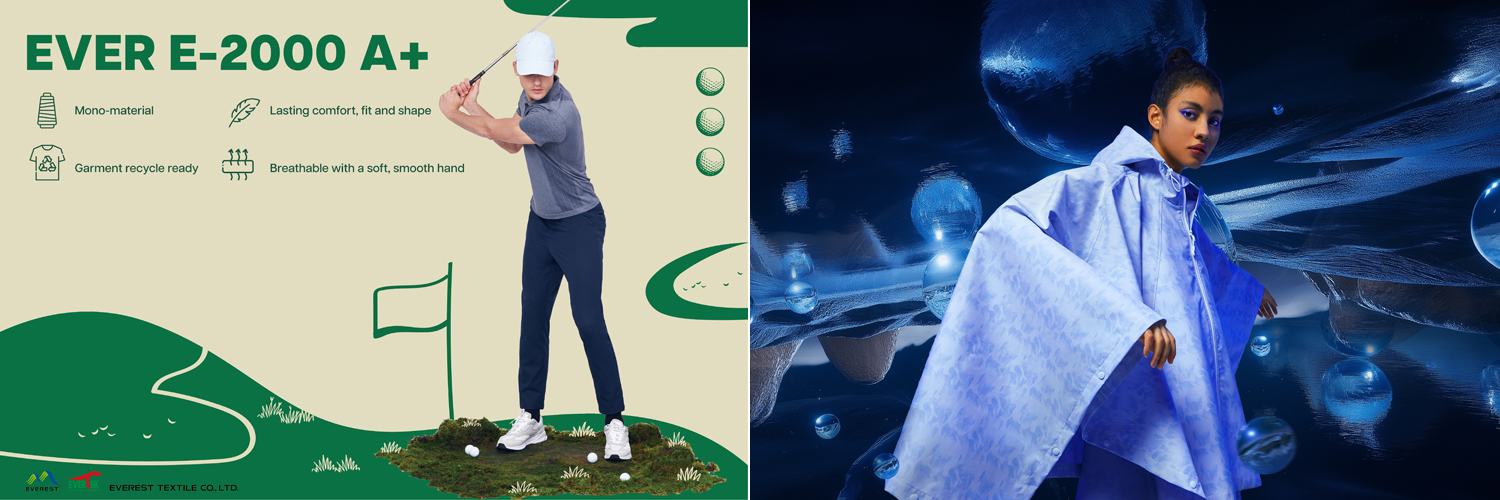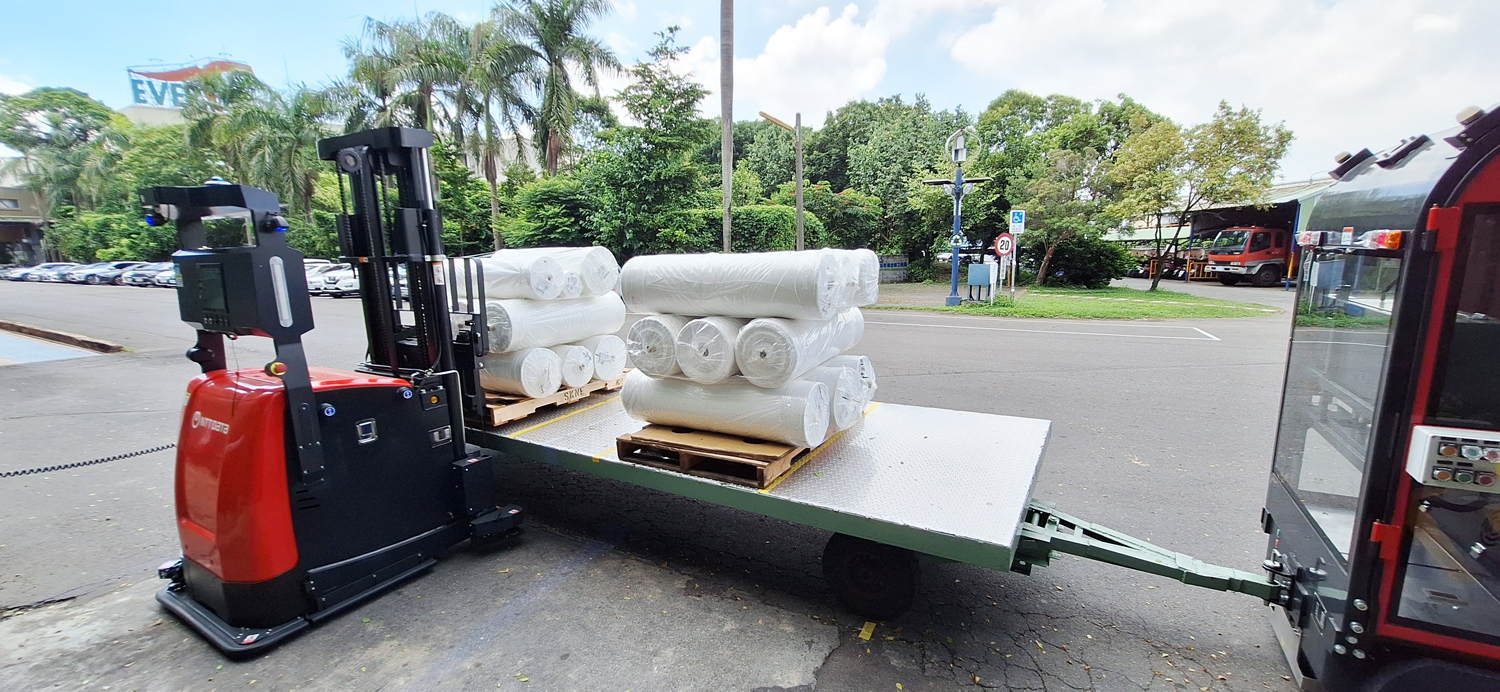Everest Textile's Sustainable Resilience: Weaving the Future in Tariff Storms, Net Zero Waves, and Digital Transformation
From:Everest Textile/Li Meilian
 In the past thirty years, under the wave of globalization, enterprises have mostly relied on "low cost" as the only guide, as stated by Kenichi Ohmae in "The End of Nation States": "Enterprises will search for the most suitable elements around the world, produce at the lowest cost, and sell their products to the global market." However, after the trade war, simple cost competition is no longer enough to determine victory or defeat. Whoever can flexibly adjust their production layout and find a balance between key technologies and costs will be able to stand firm on the international stage.
In the past thirty years, under the wave of globalization, enterprises have mostly relied on "low cost" as the only guide, as stated by Kenichi Ohmae in "The End of Nation States": "Enterprises will search for the most suitable elements around the world, produce at the lowest cost, and sell their products to the global market." However, after the trade war, simple cost competition is no longer enough to determine victory or defeat. Whoever can flexibly adjust their production layout and find a balance between key technologies and costs will be able to stand firm on the international stage.
 In the summer of 2025, the United States officially implemented "equivalent tariffs" on multiple imported goods, causing disruptions in the global supply chain. This wave of policies is not only part of the trade dispute, but also a catalyst for companies to re-examine their supply chain strategies.
In the summer of 2025, the United States officially implemented "equivalent tariffs" on multiple imported goods, causing disruptions in the global supply chain. This wave of policies is not only part of the trade dispute, but also a catalyst for companies to re-examine their supply chain strategies.Everest Textile's response strategy is to maintain the soul of innovation in supply chain rebalancing, and weave a comprehensive resilience to face challenges with its core advantages, sustainable innovation, and smart manufacturing.
1、 Core advantages and response strategies: Stable layout and value enhancement
Everest Textile's competitiveness in the international market stems from three core advantages:
1. Global layout: Everest Textile has set up factories in Tainan, Shanghai, Thailand, the United States, and Ethiopia, not only to diversify tariff risks, but also to respond to global demand through a mechanism of global factory joint manufacturing, relay design, and rapid replication and transfer of technology, quickly scheduling production capacity and delivering by production area. This innovative global operation model provides the best service experience for brand customers.
2. High value-added products: Everest Textile focuses on functional, environmentally friendly, and innovative fabrics, creating differentiated products and reducing sensitivity to price. From workwear and sportswear to high-end fashion fabrics, every product combines technical and aesthetic value, not only enhancing customer loyalty but also maintaining stable competitiveness in a market with price fluctuations.
3. Brand cooperation foundation: Long term cooperation with international sports and fashion brands to establish a stable source of orders and opportunities for joint development for Everest Textile. For example, Everest Textile has collaborated with well-known sports brands to develop high-performance fabrics that combine water repellent, waterproof, breathable, and environmentally friendly materials. They have successfully launched multiple internationally popular products, enhancing brand trust and providing resources and market guidance for the company's innovation, enabling technological breakthroughs to quickly translate into commercial value.
 Faced with equivalent tariffs from the United States, Everest Textile adopts a multi-level strategy to respond:
Faced with equivalent tariffs from the United States, Everest Textile adopts a multi-level strategy to respond:1. Origin adjustment and diversification: Flexibly schedule orders to factory areas that are not affected by tariffs, reduce cost pressure, and strengthen localized production in the United States to shorten the supply chain and meet market demand.
2. Supply chain and raw material adjustment: Develop diversified raw material sources, reduce the proportion affected by tariffs, and cooperate with suppliers to promote low-carbon and environmentally friendly materials, enhancing product competitiveness.
3. Value enhancement strategy: Increase research and development investment, launch differentiated high-end fabrics, and combine "sustainability, functionality, and design" to create brand added value.
Supply chain resilience alone is not enough. Everest Textile has chosen to collaborate with other industries to create a functional and sustainable innovation breakthrough model
1. Semiconductor cooperation: Convert CMP recycled waste into functional fibers, enabling fabrics to have antibacterial, deodorizing, anti-static, and far-infrared promoting blood circulation characteristics, which not only solves the waste problem in the technology industry but also enhances the functionality of textiles.
2. Oyster shell nylon development: Everest Textile has collaborated with Chengjiake and Far Eastern Fibertech to calcine discarded oyster shells from the coast of Taiwan to produce a new type of nylon 6,6, which not only reduces environmental burden but also has antibacterial, deodorizing, and far-infrared radiation rates of up to 90%.
3. Recycled Economy Fiber: Everest Textile and fiber giants have jointly launched the T2T snowman type side by side, combined with corn oil PTT bio fiber, providing two options: "T2T ready" and "T2T already", making the brand more flexible in sustainable transformation.
These cross-border collaborations have transformed Everest Textile from a traditional fabric factory to a 'material solutions provider', enhancing product competitiveness.
2、 Towards Net Zero: T2T Recycled Economy and Low Carbon Innovative Products
Under the pressure of global net zero emissions, the textile industry must not only pursue production efficiency, but also pay attention to the carbon footprint of raw material sources and product lifecycle. Everest Textile promises to comply with the international net zero trend and promote fabric recycling and remanufacturing with T2T (Textile to Textile) recycled economy as its core, implementing low-carbon concepts from source to product.
1. Carbon reduction measures
Energy Transformation: Everest Textile plans three major strategies: "Solar Power Plant", "Replacing Coal with Low Carbon Fuel for Boilers", and "Replacing Old Equipment and Introducing Energy saving Machines" to achieve net zero carbon emissions.
Recycling and Carbon Reduction Dyeing and Finishing Technology: Integrating recycled materials, optimizing dyeing and finishing processes, and reducing energy and water consumption.
Establish a circular material platform: Through closed-loop management, the finished products are recycled, depolymerized, and then polymerized into new fibers, achieving true 'fabric recycling'.
 2. Low carbon innovative products
2. Low carbon innovative productsRE: NEO Next Generation Screen Protection Cloak ": won the iF Design Award and C-IDEA Design Award, combining functionality, protection, and sustainability concepts, showcasing Everest Textile's ability to combine research and development, design, and sustainability.
Bio Spandex series: a biomass material made from fermented corn oil or sucrose, increasing the biomass ratio to 70% while maintaining the physical and chemical properties of elastic fibers and market applicability.
Bio2 PET series: Using agricultural waste such as sugarcane bagasse to produce polyester fibers, and combining the T2T concept, Bio2 HCR, Bio2+T400 and other series of products are launched to respond to the US SB707 regulations and brand sustainability needs.
Everest Textile actively innovates in additives, dyeing and finishing processes, and closed-loop management, such as using PFC free water repellent, citric acid antibacterial agent, and bio absorbent to make each process more environmentally friendly and achieve a comprehensive low-carbon commitment.
3、 Smart Factory Construction: Efficiency, Carbon Reduction, and Resilience Enhancement
In addition to tariffs and carbon reduction challenges, labor shortage is also an important issue facing the textile industry. Everest Textile utilizes smart factories and digital transformation, combined with 5G, AI, and automation technologies, to enhance efficiency, reduce energy consumption, and strengthen supply chain resilience.
Smart Manufacturing Layout
The rising global labor costs and the demand for sustainability have doubled the pressure on traditional production models. Everest Textile continues to promote smart factories, integrating digital technology and automation into the production process, forming a closed loop of "smart decision-making - efficient production - low-carbon operation".
Intelligent manufacturing technology measures
1. AGV unmanned transport vehicle system: By using 5G dedicated frequency network and AI vision to plan routes, it reduces manpower demand, improves logistics efficiency, reduces transportation mileage by 30%, and replaces 5 forklifts and corresponding manpower.
2. Integration of digital monitoring and Big Data: Through real-time data, inventory management and production processes are fully visualized to facilitate mastery of each production link, improve decision-making accuracy, and enhance factory resilience.
3. Machine maintenance management platform: Combining QR codes, mobile devices, and Line push notifications, the repair reporting is fully digitized, with a completion rate of over 95%, and the status of spare parts can be monitored in real time.
4. Risk control system: management of credit system and accounts receivable insurance, reducing the over lending ratio from 80% to 5%, with an improvement of up to 75%, improving the efficiency of fund recovery.
Transformation benefits
1. Reduce energy consumption and carbon emissions: automate processes and AI control to reduce waste and emissions.
2. Improve production efficiency and accuracy: Each link can be monitored and optimized in real-time.
3. Enhance supply chain resilience and immediate response capability: quickly adjust production capacity and scheduling to cope with market fluctuations and brand demand.
Through smart factories, Everest Textile not only solves the problem of labor shortage, but also establishes significant advantages in efficiency, carbon reduction, and resilience, providing stable and high-quality supply chain services for global brands.
Three forces, the future of weaving industry
Whether it is the supply chain rebalancing in the face of tariff storms, the recycled economy innovation under the net zero wave, or the digital transformation challenges brought about by labor shortages, Everest Textile has demonstrated a proactive and resilient attitude towards transformation. With its core advantages, sustainable innovation, and smart factories, it has built a competitive barrier for global layout, high value-added products, brand cooperation trust, recycled economy, and digital transformation. From cross industry alliances to cross-border cooperation, from biomaterials to recycled economy, from 5G intelligent logistics to Big Data integration, Everest Textile is not just weaving fabrics, but also weaving a future oriented industrial blueprint.
In the era of constantly changing global situations, Everest Textile provides a valuable answer: true competitiveness is not just about cost advantage, but about the comprehensive resilience that combines technology, sustainability, and digitalization, leading the textile industry towards a future of high value and sustainability development.
#








